- News
- Reviews
- Bikes
- Components
- Bar tape & grips
- Bottom brackets
- Brake & gear cables
- Brake & STI levers
- Brake pads & spares
- Brakes
- Cassettes & freewheels
- Chains
- Chainsets & chainrings
- Derailleurs - front
- Derailleurs - rear
- Forks
- Gear levers & shifters
- Groupsets
- Handlebars & extensions
- Headsets
- Hubs
- Inner tubes
- Pedals
- Quick releases & skewers
- Saddles
- Seatposts
- Stems
- Wheels
- Tyres
- Tubeless valves
- Accessories
- Accessories - misc
- Computer mounts
- Bags
- Bar ends
- Bike bags & cases
- Bottle cages
- Bottles
- Cameras
- Car racks
- Child seats
- Computers
- Glasses
- GPS units
- Helmets
- Lights - front
- Lights - rear
- Lights - sets
- Locks
- Mirrors
- Mudguards
- Racks
- Pumps & CO2 inflators
- Puncture kits
- Reflectives
- Smart watches
- Stands and racks
- Trailers
- Clothing
- Health, fitness and nutrition
- Tools and workshop
- Miscellaneous
- Buyers Guides
- Features
- Forum
- Recommends
- Podcast
TECH NEWS
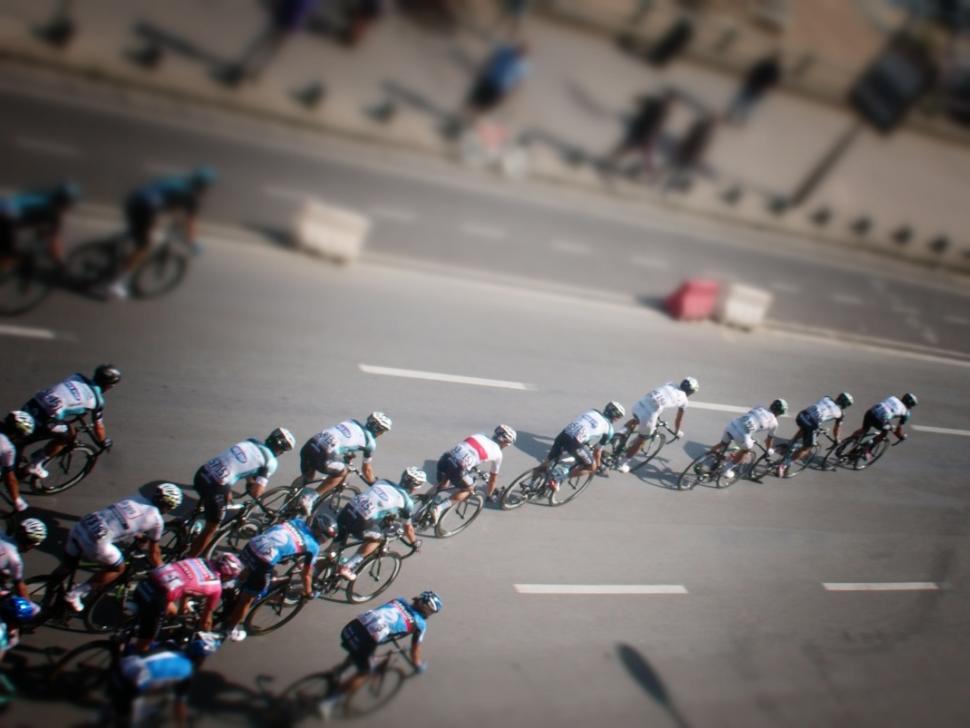 Giro Napoli copyright Simon MacMichael 006
Giro Napoli copyright Simon MacMichael 006Which UCI technical rules should be updated? We asked the experts
The bikes the professionals use are about to change radically... Well, they are if a lot of the bike industry's most influential companies have anything to do with it. And if the bikes the professionals use change, the bikes the rest of us ride will alter soon afterwards.
Your next bike could be dramatically lighter, faster, and more comfortable than your current one, if the bike industry gets its way. In fact, from what the people we've talked to have been saying it would seem your current bike would be a lot better than it is if it wasn't for those UCI tech regs.That applies whether you race or not, and pretty much irrespective of your bike's price tag too. It even has an effect beyond the performance bike category. What the pros ride makes a difference.
Okay, let's start at the beginning. Why might the pros' bikes be about to change? Well, Brian Cookson’s election as president of the UCI (Union Cycliste Internationale, cycle racing’s world governing body) last month has ushered in a period of potential change in cycling.
.jpg)
It's not just on doping that Cookson is facing pressure to take far-reaching action. Many of cycling's biggest brands have long been frustrated by the UCI's technical rules, feeling that the regulations are archaic and stifle innovation.
The rumblings of discontent have been getting ever louder lately, if our conversations at recent trade shows are anything to go by, and the bike industry has a whole lot of financial muscle. In terms of revenue, it is the biggest sports goods industry in the world. When you have people like Giant, Canyon and Storck (see below) saying that the UCI's minimum weight limit for bikes is outdated, for example, you have to think that the rule is going to be changed eventually, and that time be fast approaching.
The rules
The UCI's equipment rules are set out in Chapter 3 of the UCI Cycling Regulations, and that 6.8kg rule is perhaps the best known. The regulations also cover bicycle shape, tube dimensions, rider position, and so on.
The UCI amend and clarify the rules from time to time, but many date back to the Lugano Charter of 1996. At that time, the UCI Management Committee said, “The UCI wishes to recall that the real meaning of cycle sport is to bring riders together to compete on an equal footing and thereby decide which of them is physically the best… If we forget that the technology used is subordinate to the project itself, and not the reverse, we cross the line beyond which technology takes hold of the system and seeks to impose its own logic.”
Essentially, they were concerned that technical innovation meant that, “The performance achieved depends more on the form of the man-machine ensemble than the physical qualities of the rider, and this goes against the very meaning of cycle sport.”
The result was a set of equipment recommendations that were eventually ratified in 2000.
 The biggest change on the technical side of the sport since then has been the UCI’s introduction of their approval procedure for frames and forks at the start of 2011. Rather than having individual race commissionaires determine the legality of any frame and fork at a UCI accredited event, each brand now has to have their frames approved in advance by the UCI.
The biggest change on the technical side of the sport since then has been the UCI’s introduction of their approval procedure for frames and forks at the start of 2011. Rather than having individual race commissionaires determine the legality of any frame and fork at a UCI accredited event, each brand now has to have their frames approved in advance by the UCI.
Wheels for massed start events on the road and in cyclocross need prior approval too. In order to gain that approval, wheels must pass a rupture test in a UCI-approved laboratory. The UCI has also signaled its intention to extend its approval processes to other equipment over time.
Time for change?
So, what’s wrong with the rules? Well, there’s an argument that technology has overtaken the UCI regulations. Every manufacturer can now easily produce bikes that weigh well under 6.8kg without compromising safety (not that the weight necessarily corresponds to safety anyway), so aren’t the rules just holding back innovation or, at the very least, not reflecting modern capabilities?
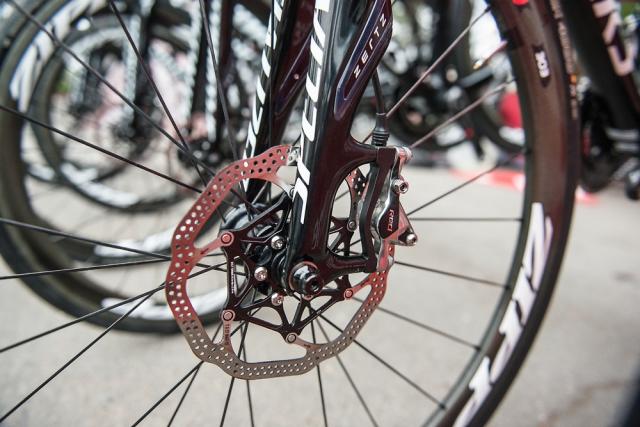
Also, big manufacturers like SRAM and Shimano have come out with major new disc brake designs recently, and Campagnolo will follow suit soon. They’re currently not allowed in UCI accredited races on the road; should they be?
We decided to ask leading figures in the bike industry what they thought should be done now that there seems to be a new mood of change at the UCI (maybe). Many didn’t want to make suggestions. Fair enough. This reply from Alex Wassmann, SRAM's Road-Tri-CX Sport Marketing Manager, is representative of several…
“SRAM is a member of the WFSGI (World Federation of Sporting Goods Industry). This organisation is the officially recognised cycling industry representative body by the UCI/IOC [International Olympic Committee]. WFSGI voices the interests of manufacturers whose products are raced in UCI events.
"Through WFSGI we and other voluntary industry members are engaged in an ongoing dialogue with the UCI regarding their existing and potential cycling technology regulations and policies. We and the other members naturally also seek expansion in interpretation, modifications or additions in the UCI regulation's as relevant bike tech marches forward and as road sport as it is interpreted by the UCI/IOC changes.
"After several years of activity WFSGI has developed a confident voice on behalf of its members and our varied interests. Therefore we think the WFSGI is the best to answer in detail your question.”
That's reasonable. So, we did indeed ask the WFSGI (see below). Here are all the responses we received to the question ‘Which UCI technical rules should be updated, and why?’
The words “rules/regulation” are never ideal for our industry. It is tightening our hands when it comes to innovations even when we know that in certain cases it is inevitable that rules/regulations have to be made.
In the case of the UCI we struggle with the fact that the know how of the UCI technical staff on bicycle products is very limited and therefore there is a big gap in understanding to our industry on the technical challenges.
Our industry has many years of experience in product development and we can support the UCI in many ways when it comes to rules/regulations for products but we shall not live in the past. Therefore we need to come to a point with the UCI where product innovation can contribute to make racing more attractive and healthier for the riders, spectators and the television viewers.
We should not forget that “innovation is sales” and “sales” mean “investment in the sport”. If this doesn’t work, brands have increasingly difficulties to continue to invest in professional racing. Today, the amateur riders can use better and more high tech products then the professional riders and this is quite a “special” situation and probably the only sport where this happens. We are looking forward to further discuss with President Cookson to better catch his views on our industry issues.
Note that we will soon have further discussion with the UCI on the next steps. We have open issues on wheel and technical rules where we shall understand the way forward.
Robbert De Kock, Secretary General, World Federation of Sporting Goods Industry
From our perspective what we would like to see changed are the following:
1. Weight minimum. We can easily hit weights well below the current minimum and pass all CE testing. The weight minimum has hindered what we can do from a manufacturing standpoint and the product in the pro peloton is not truly indicative of what we, Giant, can actually do if we were to have free rein.
2. Double diamond design. I'm not saying we would immediately abandon the current design but we'd like the option to explore a bit more.
Outside of this it can just get nitpicky. Overall we want to provide our athletes with the best product possible and with the current and clearly outdated rules we cannot deliver what we are truly capable of.
Jon Swanson, Global Category Manager for On-Road product, Giant
We all sit in the same boat and have to see that we push forward the sport of cycling together. We only can be successful together.
To reach this goal, I wish for a closer and more intensive communication between the manufacturers and the UCI. Everybody should understand and respect the needs and requirements of others. For the UCI, the main targets should be to take care of the safety of the rider and to prevent any unfair advantage coming from the material.
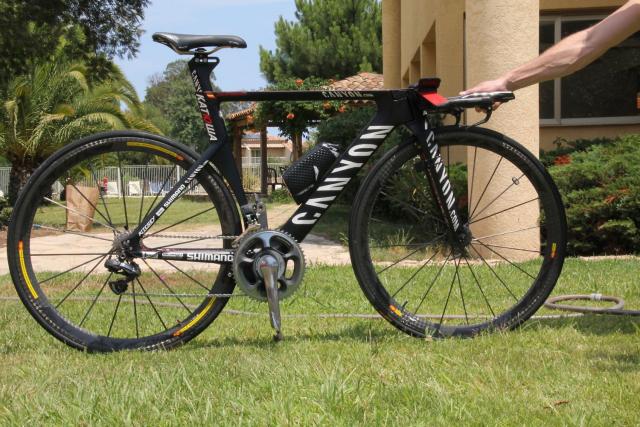
Topics where I see a need for discussion:
6.8kg rule: I think it is already proven that it is possible to produce safe bicycles under 6.8kg.
Seating position time trial: A lot of riders are not able to sit ergonomic on the bike with the current restrictions.
Braking system: Finally, the UCI should allow the best and safest brake system for the rider.
Of course, the shape and cross section rules are also a huge limitation for the design, and they should also be discussed.
Michael Kaiser, Director of Engineering, Canyon Bicycles
I have three points that UCI should change.
1. Weight limit. It does not make any technical sense to have a weight limit at all. Products do need to pass technical test such as stiffness, maximum loads, and lifecycle test. Storck works with EFBE lab and EFBE Testing machines [bicycle test specialists] and we feel that those tests are optimum to guarantee safety to the riders. If a frame is passing these test then there is no need to have any other testing. Our bikes are passing these test and the weight of some models is 5.5 kg or even lighter. UCI is not allowing innovation.
2. UCI sticker. The UCI is asking the manufactures to send them the drawings from a frameset and then to pay a fee. This has no other reason thea having a cash cow, by looking on a drawing you cannot check any quality and it is not safety for the rider at all. UCI must change this and they can check at a race that the frame is keeping the dimensions they request.
3. UCI should make disc brakes legal and there must be tests that frames and forks must pass in order to be allowed.
Markus Storck, founder and CEO, Storck Bicycles
Liberalising the world of road bikes could have a positive effect, but only on the condition that if the rules are relaxed, they must continue to be managed in is strict framework to avoid going out of control. In order to do this there is only one solution: gathering together all the major players for a round table.
Gilles Lapierre, Managing Director, Cycles Lapierre
The biggest rule that needs a change is the UCI wheel rupture test, or impact test. This is something that we have been working with other industry brands to suggest realistic standards to the UCI through the World Federation of Sporting Good Industry wheel committee.

We would like to see real world load and a test procedure that can be conducted by multiple labs with clear pass/fail criteria. This will ensure rider safety while allowing innovation.
Adam Marriott, Product Manager, Easton Cycling
There are many areas where we need to think about a change of the regulations because these regulations were made over 13-14 years ago, where the bikes and the material used at that time were very different from what we are using today.
For this reason, the bikes and components in the last years have made tremendous evolution, thanks to the use of composite and the know how that has been made by the industry. Thanks to this, we suppose that the rules and the limitation need to follow the evolutions.
The areas to work on are:
- Make sure all the bikes and components are able to accomplish the CEN rules, not just by the weight limitation.
- Disc brake for road bike.
- Improve the rules and the protocol to approve the wheels that can be used for racing.
Claudio Marra, General Manager, FSA Europe
Road: The market requests very comfortable tyres, which could prevent any impact, if they have more volume. The current rule restricts the use to a certain volume (diameter). Let’s rethink this rule to provide better performing tyres.
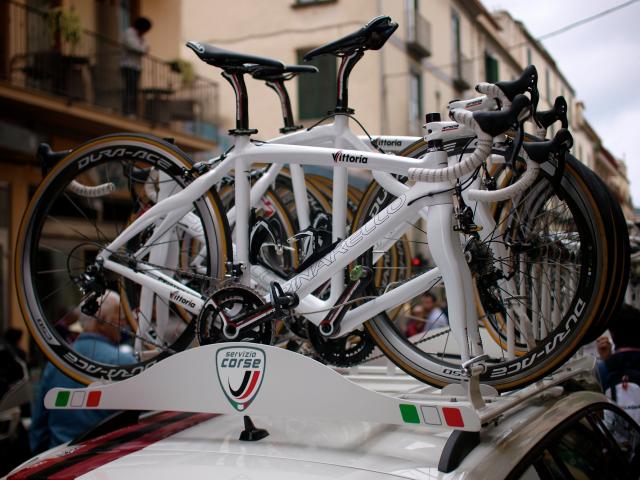
Off-road: The only thing that has come up recently, was that if a rider raced a non-UCI event, then they might have their license revoked. This clearly does not promote racing as a whole, and is greedy on the part of UCI. This is especially relevant for Enduro, due to the World Enduro Series that was recently created.
Malte Stampe, Director of Global Marketing and Communication of the Vittoria Group (Vittoria tyres, Geax tyres)
First of all, congratulations to the new President. Our hope is that he will give more space to tech innovations on road racing bikes. Of course, in full safety. I mean; innovation should never compromise the safety of the athlete.
For example, a good thing could be allowing disc brakes on road racing bikes. Bicycles’ technical innovation and progress cannot be stopped, particularly when it is devoted to better the bike performance and the athletes’ safety.

Vittorio Fontana, Olympia Group owner (Olympia bikes, Scapin bikes, Frera)
Brakes: The first change I’d like to see on road racing bikes is disc brakes, say making them legal from 2016, so everyone has time to adapt. Disc brakes are safer because they offer far better modulation (power without lockup) and the rims do not undergo brake pad damages. The fear of peloton accidents due to different braking power is baseless. The brakes used today all have different power anyway due to different designs and materials.
Bars: The 3:1 rule [tube depth must not exceed three times the width] could pass to 4:1 and then 5:1 over the years, to promote some changes.
Wheels: Wheels as well could benefit from more design freedom. There’s plenty to be done there. Of course, always progressively, to avoid sudden radical changes.
More generally, I think UCI should let more innovation go into bikes, wheels and parts, so the whole industry could grow and offer more support to the sport.

Simone Roncali, Director Product Development, 3T Cycling
CamelBak has been working closely and always had great understanding and responsiveness from UCI when it comes to approval and adoption of innovative products. The Racebak underwear (underwear with integrated reservoir for drinking while riding) has been around for a while and many riders from different team (regardless of sponsorship obligations) asked CamelBak to use it and indeed they used it.
UCI doesn't oppose the use of the RaceBak but is limiting the size of the reservoir to 0.5L. For this reason we would suggest elevating this limit to at least 1L, considering that in some racing condition (length and duration of a stage) and weather conditions (hot temperature days) the 0.5L reserve may not suffice to keep the rider properly hydrated.
On another subject: UCI has recently introduced the green zones at the Grand Tours; these are specific areas along the route where riders should discard empty bottles (which are then collected by the race organisation) and therefore should contribute to a more green and less polluting behaviour of the riders during the race. This environmentally friendly and sustainable initiative should be patrolled and UCI should, if not give a fine to those riders throwing away bottles outside the designated areas, possibly give some bonus to those riders/teams who are behaving according to the new rules.

Massimo Fregones, Director, International Sales & Marketing, CamelBak International
De Marchi has been making racing wear for the world’s top riders for over 60 years, clothing world champions and tour winners. We have seen a lot of changes in the sport of cycling in that time and are hoping that the recent changes will bring stability and harmony to the sport we love.
Up until this point, the UCI has not imposed many rules regarding clothing design and at De Marchi we are hoping it remains that way. Too much regulation will limit innovation and we totally support the fact that racing innovation be available to everyday cyclists.
Mauro Coccia, De Marchi owner
So, what do you think? Have these industry figures got it right, or are we happy with things the way they are? Let us know your views...
Mat has been in cycling media since 1996, on titles including BikeRadar, Total Bike, Total Mountain Bike, What Mountain Bike and Mountain Biking UK, and he has been editor of 220 Triathlon and Cycling Plus. Mat has been road.cc technical editor for over a decade, testing bikes, fettling the latest kit, and trying out the most up-to-the-minute clothing. He has won his category in Ironman UK 70.3 and finished on the podium in both marathons he has run. Mat is a Cambridge graduate who did a post-grad in magazine journalism, and he is a winner of the Cycling Media Award for Specialist Online Writer. Now over 50, he's riding road and gravel bikes most days for fun and fitness rather than training for competitions.
Latest Comments
- wtjs 0 sec ago
we could have ANPR cameras automatically issuing sanctions to vehicles...
- mark1a 32 min 29 sec ago
He pays all the tax that the state he lives in requires of him.
- Tom_77 2 hours 48 min ago
The SaddlePod looks nice, but if you're in the UK by the time you've paid shipping ($31) and import duty (who knows where we'll be with that come...
- TheBillder 2 hours 51 min ago
I've had (past tense is deliberate) 3 of these over the past 5 years. I'm back here researching for a replacement as my last one broke last week. I...
- chrisonabike 4 hours 53 min ago
And the next time - plead sympathy for your addiction, caused by trauma from your previous "accident"...
- wtjs 4 hours 56 min ago
Butyric Acid... was the most disgusting thing I have ever smelt in the lab...
- ubercurmudgeon 5 hours 27 min ago
Even a stopped clock, etc, etc...
- Bigtwin 6 hours 48 min ago
I wouldn't be meeting that Orange Pillock anywhere, let alone 1/2 way.
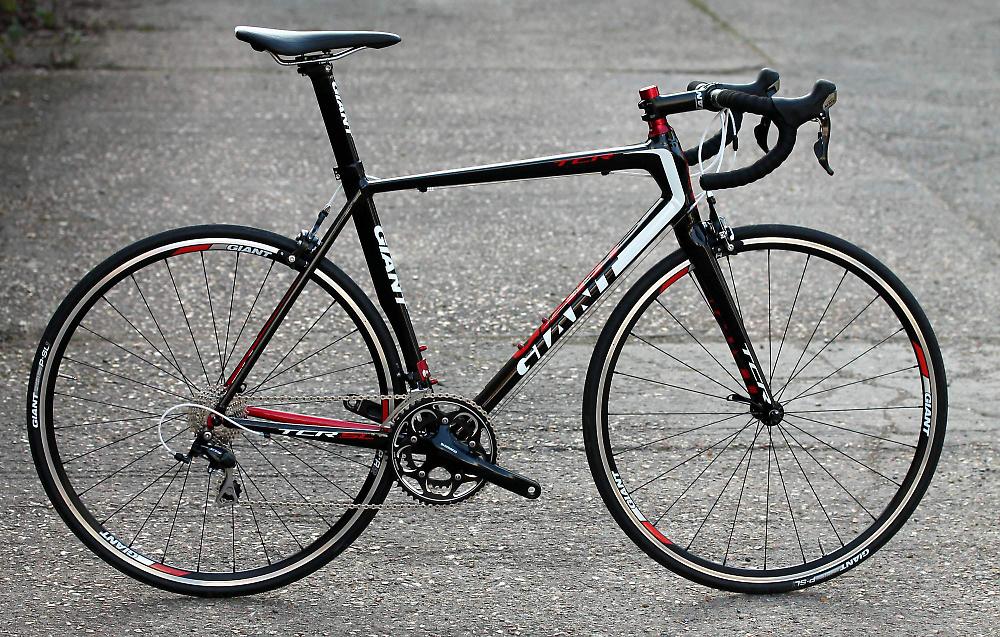

Add new comment
43 comments
The UCI stifling innovation since 1996? Wind the clock back to the mid 1930s when they banned recumbents because a 3rd cat roadie started breaking a few track records...
I'd like to see the rules regarding cyclocross tyres updated so 32mm wouldn't be the only "choice" for us mortals.
Vast majority of people don't race so why is their choice limited to what the competitors use?
Not sure about the ideas from CamelBak.
On a tour stage the riders can apparently drink 9 .5l bottles. So they would either have to use a 4.5l CamelBak or fill up a smaller one on route. Who would want to carry 4.5l up the Alps and who would waste time filling up a lower capacity CamelBak every couple of hours and watch their competitors get handed another bottle while riding off into the distance?
It would be like timing pitstops in F1.
So even if they are legal no one would use them anyway.
They are only intended for time trials. Especially since they provide an aerodynamic advantage by filling the hollow belly area, while allowing the bottle holders to be removed from the frame.
Drinking pants? Who cares? Why are there even regulations?
I think the 6.8kg weight limit is fairly sensible. It brings a pro standard bike within reach (if you're prepared to spend a bit) of the common man, and the most important component - the human sitting in the saddle - is the thing that makes the biggest difference.
I'd like to see them ride the same bike for the whole race - get rid of this TT bike nonsense and back to the days before Greg LeMond ruined the whole thing.
Two flawed arguments in one post DrDog. The weight limit for professional's bikes is usually met by adding ballast (lumps of lead stuck on the frame and lengths of chain in a tube are common) so how would removing this ballast suddenly put a pro standard bike out of the reach of the common man? And you will find that TT bikes were common (low profile frames, cut-off upturned handlebars, disc wheels etc) before LeMond added a different set of handlebars to his TT bike. I agree with you about using one bike for all disciplines to a certain degree but would you then also ban light wheels for hilly events, deep section rims for faster flat stages and allowing riders to use long stems and ride on the tops during time trials? These are all just the variations on using a different bike for time trials.
Sort of... it refers to any bike that looks basically like this:
A triangle formed by the seat, top and down tubes at the front directly bordering onto a triangle formed by the seat tube, chainstays and seatstays at the back.
As opposed to something like this:

Again, the "double diamond" rule is there to stop riders using recumbents or monocoque frames.
When I first went over to watch the Tour (in 1960) my bike, which had cost me about £65, was as good as or in some cases better than those the pros were riding. Not possible now sadly even if you have silly money available.
Perfectly possible.
I can buy the exact same frame that any number of the top pros race on - maybe not the same geometry cos some are custom but the frames are identical.
Groupsets - Di2, SRAM Red and Campag Super Record are all readily available in the shops.
Wheels - same again, they're all factory wheelsets. Finishing kit - OK, maybe some minor differences but the vast majority is either open market or is a customised version of something available to the public. And I don't need to worry about the weight limit either - it's easily possible for me to build a bike which is about 5.5-6.0kg using entirely off-the-peg parts.
Lucky you!
But such is the level of R&D and competition for sales that we surely can't compare today's pro level spec with what they rode in the sixties. Pinarello have sold a heap of Dogmas since 2010 while deep carbon wheels are all the rage simply because people want to 'look pro'. Away from racing the custom/artisan framebuilding scene is very healthy, materials include titanium, high-grade carbon and even 953 steel tubing. Those with a sizeable budget may not get 'better' than pro-spec but they are not short of choice!
The 6.8 kg limit may be something of an anachronism but lowering it will not change the racing. So why do it?
Agree on the double triangle view take...
I don't think the F1 analogy is quite right. Is there a rule that states two teams can't use the same bike? If the bikes must be commercially available, then why can't every team have the same bike. I can't see any innovations being exclusive to one manufacturer for long either.
In F1, the engineering is meant to be part of the challenge and the best drivers aim to drive for the teams with the best engineers. The chief engineers are as much celebrated as the drivers and there is a constructor's championship. I just don't see cycling going that way by relaxing the rules from what they are now.
I always like the idea that pros are riding bikes at least similar to mine though (shape etc.).
The bike market is predominantly recreational riders so why don't the manufacturers just get on with producing technologically advanced machines while continuing to offer a limited range of UCI legal bikes to those who need them?
The UCI will be quick to catch up once MAMILs are riding better bikes than the pros.
I don't get the double diamond thing. It looks like a double triangle to me.
Anyway, I think the main thing is that the rules be as fair as possible, and that bikes remain bikes. The last thing I would want to see is cycling turning into the sort of farce which the America's Cup now is, with no-one knowing whether it will be a monohull, catamaran, trimaran etc and boats breaking up and sinking because they are designed only for speed. I want to watch the recognisable sport of professional cycling, not some weird science contest about human powered vehicles.
Exactly. A double diamond looks like this:
I think the double diamond refers to the two rear triangles. I.e left side view and right side view rather than a single (mono)stay as found on some motorbikes or older E-framed bikes.
The disc brakes argument is an interesting one. Unless they can make the pads more quickly adjustable it is doubtful pro teams will want to make the switch as wheel changes will be time consuming and imprecise in terms of braking.
I was talking to a DS of a continental team recently and he doubted whether they would work in their present form for pro racing for exactly that reason. He also suggested that the irony was they would not be successfully sold to masses of amateurs until they were seen to be used on mass by pros - so it's an interesting conundrum.
The bike industry wants disc brakes to work on road bikes as it's the last major revenue niche. All the talk of lighter wheels without braking strips and improved braking is marginal waffle.
I love the suggestion that lighter and lighter materials does not alter the safety of the bike. I don't own a carbon bike as the term 'catastrophic failure' isn't very reassuring. Carbon forks and other bits and pieces? Fine. But a whole bike whittled down to the weight of a feather is not as durable and as forgiving as a bike made of stronger materials. It just can't be and anyone who tells you otherwise forgets our human history of random icebergs and what cold weather does to booster rocket o-rings...
Catastrophic failure on a carbon fork is going to have exactly the same (if not worse) effects that catastrophic failure of a frame yet you're happy to use them?
F1 cars are made of carbon, the wings and a lot of the key structural components of modern passenger jets (Boeing 777, 787) are made of carbon fibre. There's nothing wrong with carbon fibre when used correctly, it can take way more force than steel or aluminium. Yes, it's fragile if you slam it into a wall at 40mph but then so is steel and aluminium.
The issue they're getting at here is that the weight limit of 6.8kg is effectively strangling the possibility of exploring and innovating frame design much further. The limit, for those who are interested, was brought in before CF was common and when "weight" was the only variable - before people knew about nutrition and aerodynamics, you had riders drilling out frames and components which was dangerous and caused frame failures so the limit was designed to stop riders doing that. Obviously it's now woefully out of date but it was put in for the best intentions.
With TT bikes especially converging on quite a narrow design range - the most aero design possible under the UCI regs - I was suspecting this kind of thing.
My take on what was said is that the manufacturers are running out of legal design improvements. Why should people buy the new model, when the older model was 95% as effective?
For purely commercial reasons I'd see them wanting a gradual phased relaxation of the rules, to give them new ground to move the designs into.
You can see too that the manufacturers are now feeling that they have to push the designs beyond the UCI limits to win in the triathlon market, but then have to keep a more restricted design/spec to have a UCI legal TT bike too.
With the current collection of frame shape rules, the UCI approval sticker is about the only way to go - the limits are too complex to measure precisely enough with just your eye and some calipers, so to get away from that kind of approval scheme, the restrictions have to be reduced too again, or made a lot more straightforward - which would probably effectively make them more restrictive than at present.
Hi to you all out there. It strikes me that Cycle Racing both Road & Track especially but not forgetting all other facets of the sport are getting further and further away from reality than I could ever have imagined.
Indeed,it is becoming the pedal powered version of Formula 1.
The machines that are being ridden today are so far away from what was the accepted standards and in most cases regular off the rack/hand-built bespoke cycles.
These bikes were ridden by the greats and built by the local cycle dealers and or frame makers in there respective countries/regions.The entry level road bikes for the masses are the furthest thing that could be imagined by the newbie to the world of cycling. Starting with one of these entry level bikes is a sure-fire route to either loosing interest or putting a financial noose around the necks of the gullible.
The building of bikes for the mass retail market has little or nothing in common with competition/road race bikes.
The professional riders are simply riding examples of 'Badge Engineering' and potential manufacturing One-upmanship.
The notion of our component is better than yours and the constant striving by the general public/club rider to aspire to emulating their heroes is doing very little for the recycling of whole cycles for the market that serves the less fortunate and well heeled buying public.
The cross compatibility of parts and components is becoming a nightmare and it is likely to stifle any progress by the older routes of swapping and changing parts/components in a manner of upgrading with minimal expense incurred.
The trade will often refer to it as 'Protecting The Product'.
A great many would interpret that as Milking the already milked cash cow.
It is often counter productive to any intention of promoting cycling and cycle sports because the higher priced the product becomes,the fewer are in a position to purchase.
The fewer that are purchased the higher is the 'On Cost' per unit,this invariably will lead to a cheapening of the product because of the need to source cheaper components and the cycle starts all over again.
a level playing field is key - races need to be won on merit, not because of access to exotic equipment. There is plenty in the current rules that is outdated and that should change, but equally there has to be a way that budgets across the world tour, pro tour and continental field are kept in check/remain comparable and don't lead to the old F1 situation. It seems that the UCI currently do not actively enforce the rule regarding commercial (to the general consumer) availability of a new piece of kit/equipment.
If the bike industry wants to innovate their products - and I want to reap the benefits of that as well in the trickle down - than that should be possible. The products should be available to the wider public at the latest in the season following their introduction in the pro peloton and their SRP/RRP prices should somehow link in with an agreed limit to team equipment budgets.
You put Wiggo on a MTB and he won't be winning his next TT.
Yeah get rid of that weight limit. Up it to 10kg at the very least and let's make the pros look a little more human and us amateurs a little less ordinary.
I'm with the guys above. No arms race please. Biking should be about the men not the machines.
Disc brakes make sense, as for the rest? Hmm. I mean come on, underwear you can drink from! That's where I draw the line. I only eat from mine.
Why cant the manufactures just build better bikes for us now ? what percentage of bikes that are sold are raced and therefore have to comply with these regs ?
I think this is all horseshit to be honest, do I still buy a car even though it doesn't look like an F1 car ?
I couldn't care less what the pros ride, very few pros ride off the peg bikes anyway.
I say to the manufactures, forget the UCI crap, build damn good bikes and people will buy them, magazine reviews are far more influential than what the Pro's ride.
Disagree. The whole point of pro sport is that they have the best and us mere mortals aspire to that. Why do you think Pinarello are so popular now. Not cos of magazine reviews, its cos of Brad. Same with Trek back in the early 2000's, Lance was winning so Trek got really popular. The mags want to review Tour winning bikes, people want to read about Tour winning bikes.
Regardless of how many bikes end up being raced, can you imagine the carnage amongst suppliers and shops if every model was available in a UCI version and a 'better' version? Or if you go into a shop, buy the best then decide a year down the line that you're going to try this racing lark, you turn up at your local race and you're told "can't race that, it's not legal". Not good for the sport.
That would make pro sport look a bit silly and backward which would put off the sponsors which would dry up the revenue.
The rules need changing but within reason and with absolute clarity and transparency to benefit the sport as a whole.
The comment about not wanting cycling to follow the F1 arms race I think is a good one, the last thing i remember about f1 was that some rear diffuser on one car (i think redbull) was possibly out of the rules but they were racing round with it and winning races pending a decision from the ruling body whether it was legal or not. Now I'd much prefer the current situation with cycling to that situation translated to cycling. you'd have GC riders jumping ship if one bike was better, and surely with patents if something was so good, not every one could have it?
In none world tour races the world tour teams would surely have a massive advantage over the other teams if their bikes were all say.. 5.6kg and 10% more aero? just because the continental teams couldn't afford to have the best kit?
Seems fraught with unintended consequences to me and the bike manufacturers would just love it if everyone upgraded there current bikes to disc equipped ones, but aren't likely to just leave the sport if the UCI says, no rules are fine as they are.
How about imposing a 'level playing field' with a cost ceiling for any given bike instead of design rules?
For example £3000 upper limit and a minimum of say 1000 of each part used must be available to the consumer at the quoted prices for a minimum of say three months after the event, long enough to stop manufacturers artificially cutting prices to meet a teams target, short enough for cost fluctuations not to hurt the manufacturer.
I like this idea; there would be a lot of 'Bugati Veyron' lose leading bikes on the market. A few lucky punters might get a 50 grand bike if they can stump up three.
1. I thought that teams already had to use readily available parts and no "one-offs".
2. A £3K limit doesn't work when there are bikes out there that cost £10K. A 3£k limit would be very difficult considering groupsets such as mechanical RED and Dura Ace are £2-£2.5K, wheels are what another £1-2K and frames are another £3K+. Crickey, I have a £500 frame, £500 wheels, £800 gear system, £200 cranks, £160 brakes...
3. What's stopping manufacturers selling to "customer" teams? Considering a team can have 40 riders, each with 5 bikes, thats 200 units. Get 5 teams (3 continental and 2 national) and that's your 1000 units.
To be used in competition, the bike equipment must have an announced public release date not more than 9 months later than the event.
There is no minimum production number and no maximum price that applies to being "publicly available".
So.... the rule that is presented as preventing one off pieces of equipment and making sure that everything is available to all competitors..... means that you can legally make one single piece of equipment and sell it to your one competitor for any price at all. Hmmm....
Which is exactly what British Cycling did with the bikes the GB team used at the Olympics. They were mad epublically available but IIRC they chucked a £25k price tag on them so no bugger would be able to afford them
I don't believe the argument of a level playing field for bikes applies to races. Yes to the hour record but in a race there's no benefit.
Put a donkey on a top of the range bike vs a handy rider on a run of the mill road bike and we know who would win.
Pages